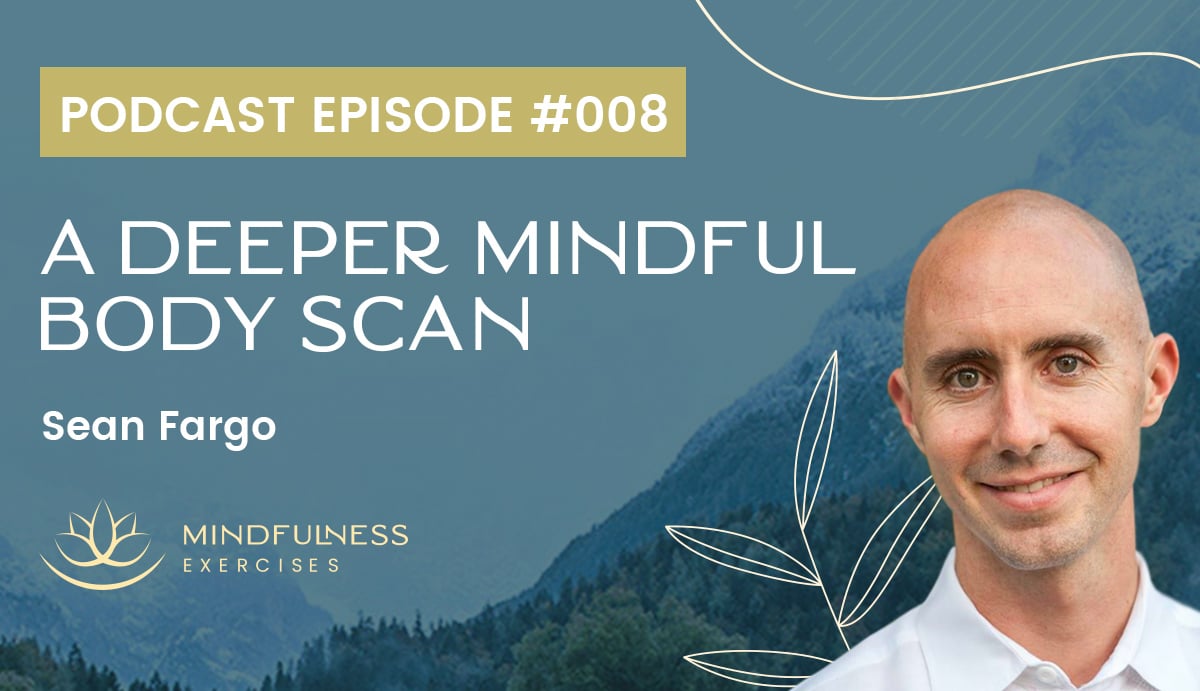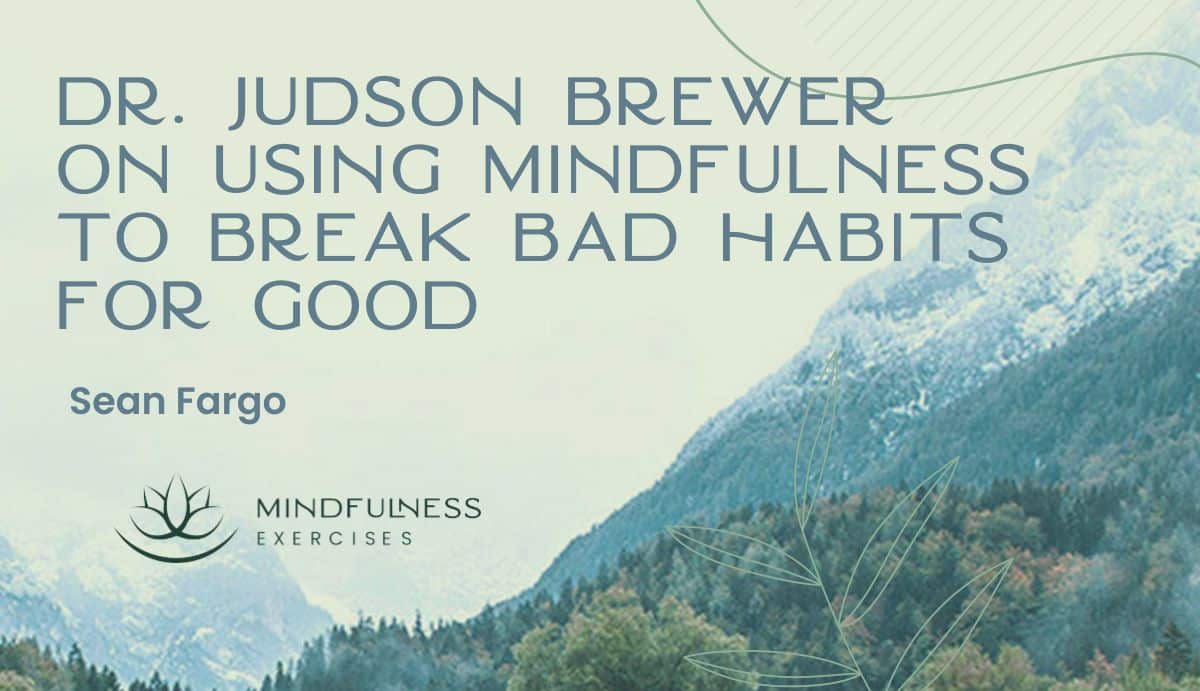Listen now

Have you ever felt like all body scan meditations are the same, even when guided by a different teacher? Do you often anticipate what’s coming next, versus focusing on the present moment?
Just as with mindfulness of the breath, the mindful body scan is a foundational practice with unlimited potential. But for practitioners and teachers alike, it’s not always clear how we can deepen our experience of the body scan in a way that feels fresh, creative and expansive.
For Mindfulness Exercises founder Sean Fargo, the mindful body scan meditation came alive only after he allowed himself more creativity with the practice.
In this episode, Sean describes how we might transform the body scan from a predictable sequence into a profound opportunity for greater awareness and open-heartedness.
This episode is brought to you by the Mindfulness Meditation Teacher Training Program. Learn more about this unique, online, self-paced certification program at teach.mindfulnessexercises.com
Show Notes:
The essence of the body scan
For a long time, the body scan was Sean’s least favorite practice. It felt formulaic, dry and predictable. It wasn’t until he learned to play around with it that he began to love it. The essence of the body scan is to see if we can notice sensations in different parts of the body without judging them. Outside of that basic premise, there are no rules. We can scan non-linearly, look for particular sensations, meditate on the elements, or spend time in one area, becoming increasingly mindful of the subtle details of each sensation.
“My point is to scan the body, not necessarily going in a linear format, but rather seeing what we can notice without judgment, being with whatever’s here even if it's uncomfortable. And that can include pleasant sensations too, and being with it, allowing the sensations to be here without judgment, and really being curious about these sensations.”
The ‘Random’ Body Scan
Although following a logical body scan sequence from head to toe or toes to head is useful, Sean prefers the creativity of the ‘random’ body scan. We can apply randomness to the sequence of the scan itself, placing our focus on any body part that’s calling our attention, in any order. We might also scan for ‘random’ things. For example, we could sense into bone, liquid, energy, temperature, flesh, or hair follicles.
“If you make it random to the point where you don’t decide the next body part until the last second, then it can aid that sense of curiosity a little bit, which is a lot of what we’re going for.”
Expanding the limits of what we can sense
It’s common to struggle with sensing into the body. At first, we might feel nothing or have trouble sensing into the elements, the heart, or other, more obscure organs. But with practice, we’re able to expand the limits of what we can sense into, as well as our ability to remain present with sensation, free from distraction. We get better at allowing for what arises, without judging or reacting to what we notice.
“The more we sense into the body, the more we sense into the chest and the lungs and shoulders and the back and the heart and all parts of the body, the more we’re actually strengthening the part of our brain that’s able to do such things. So the more we try, the better we get.”
How should we begin a body scan practice?
If we’re new to the body scan, we might want to practice with what’s easiest and then go from there. We might even start by developing mindfulness of the body while eating or walking, for example. It can be helpful to highlight sensation with movement, pressure or touch. Typically, noticing emotions in the body and working with the heart or other inner organs are considered advanced practices. But anything is fair game as long as we observe with a kind, non-judgmental attitude.
“We can practice with different parts of the body and then navigate towards the heart. Just seeing if we can notice things, or if there’s a strong emotion present like sadness or anger or joy. [...] With more practice, I have a high degree of confidence that you’ll be able to sense into those different physical characteristics more and more.”
How can we most appropriately teach the body scan?
When guiding a mindful body scan for others, it’s important to understand who we’re talking to and to be mindful of the intention of the practice. By default, we may choose to skip over genitalia or other sensitive areas and instead use generalizations such as ‘the pelvic area.’ In some meditations, it may be appropriate to mention those places, but the principles of trauma sensitivity always apply.
“For certain, highly advanced practitioners in a very safe setting where I’ve built a strong rapport with certain people and there’s less room for any uncertain messages, I might say certain body parts if there’s a context where I feel like it can be appropriate, but especially if it can be helpful.”
The benefits of the mindful body scan
When we bring gentle awareness to the sensations in our body, we build our ability to notice how sensation arises in daily life. We expand our capacity to remain present with sensation versus reacting, which can allow us to better process sensation, and allow it to move and stay fluid. Mindful awareness of sensation lets us honor sensation, and learn and grow from what we observe.
“Can we do this throughout the day as much as possible, including right now while we’re talking? Can we feel into our hearts right now? And build that ability to listen, to know how to allow it to do its thing, honor it. Same for our bellies, and our heads, the rest of it.”
Resources

About Sean Fargo
Sean Fargo is the founder of Mindfulness Exercises, one of the most well-known resources on the web for all things mindfulness. Over 3 million people have enhanced their mindfulness and meditation practices with the free and premium services provided on the platform.
Sean has taught mindfulness and meditation in Fortune 500 companies, health and government organizations, prisons and hospitals around the world. His mindfulness teacher training certification program has inspired over 500 mindfulness teachers to share the power of this practice with others.






